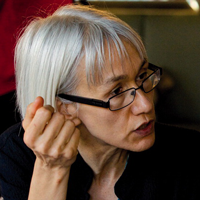Uncovering JAPA
How APA Members Can Understand JAPA's Value

How do APA members know the Journal of the American Planning Association is a success?
One answer might be how it influences practice. Another comes from the growing number of quantitative indicators including the Journal Impact Factor, CiteScore, and Altmetrics.
Journal Success Metrics Debated
While growing in number and visibility, bibliometrics has also been critiqued from multiple sides. In an editorial on "Measuring Journal Success" in JAPA (Vol. 86, No. 4), I explore these debates from my perspective as JAPA editor, examining the range of measures and how they can be manipulated.
JAPA's 2019 Clarivate Web of Science two-year Journal Impact Factor (JIF) was recently released. It places JAPA in the top few journals in urban studies.
This was the work of Sandi Rosenbloom, the prior editor, and I congratulate her on that. To understand how the work of an editor who retired in 2018 can have such a long influence, see the editorial!
Like Sandi before me, however, I argue that such measures while important are only part of the picture for a professionally oriented journal such as JAPA.
JAPA Metrics Provide Incomplete Insight
In the editorial, I conclude on a hopeful note:
"The recent news of a substantial jump in JAPA's JIF has been quite welcome. It broadly indicates that JAPA articles are reaching a wide audience of readers and authors. The generally high Altmetric Attention Scores of many JAPA articles show that they are of interest to a wider group of professionals and others. ...
"However, while the various metrics and measures have some use, they only present part of the picture. At worst, they add a veneer of objectivity to what should be a more qualitative assessment. Increasingly people can measure things that a few years ago were not quantifiable, at least not to scale. However, being able to measure something does not mean it is important to measure. This is a key insight not only for assessing journal quality but for research in planning more generally."
I conclude with the hope that JAPA's success will be judged broadly in terms of how it can improve planning practice, planning knowledge, and the world more generally.
Top image: Covers of JAPA Vol. 86, No. 4.



